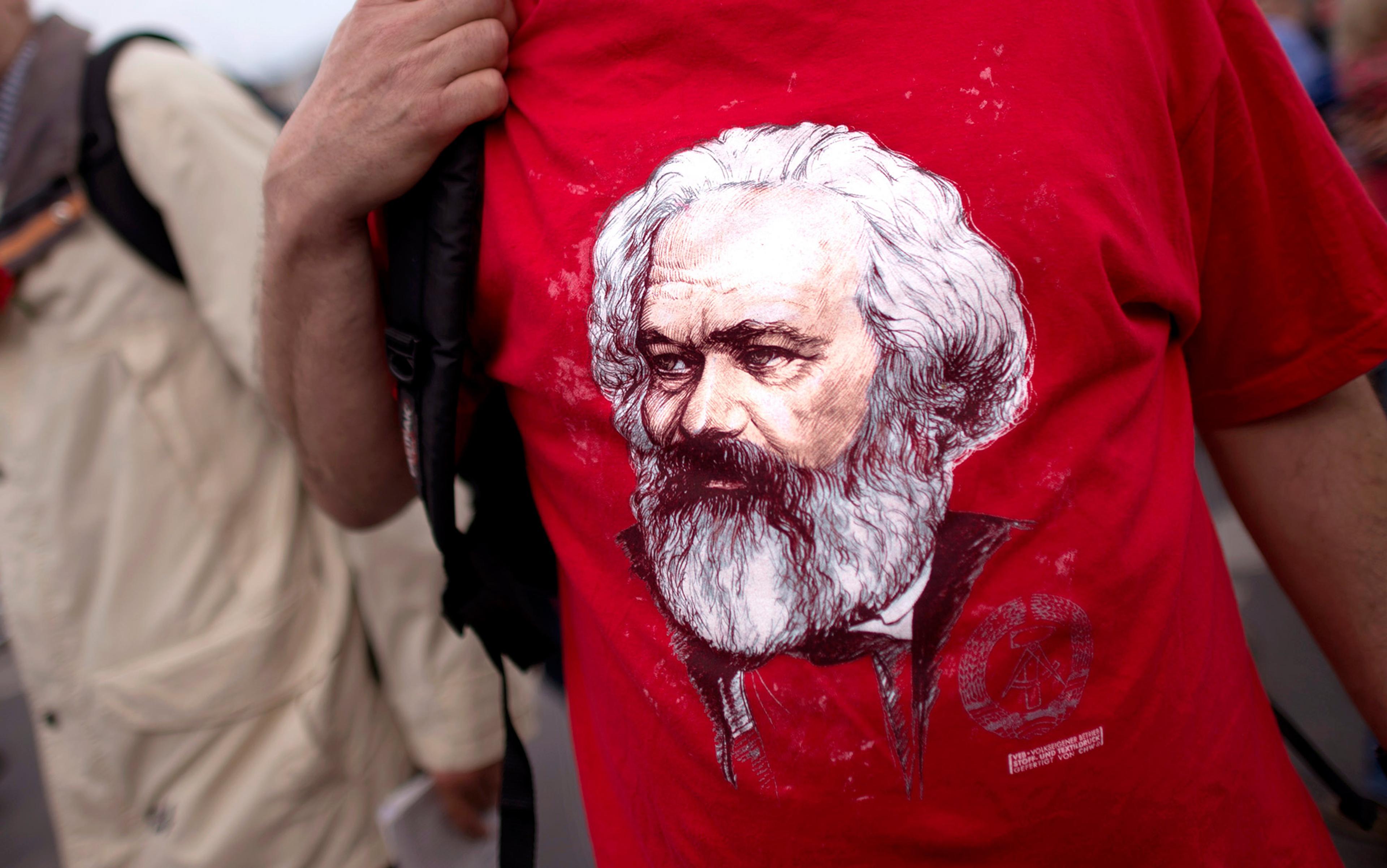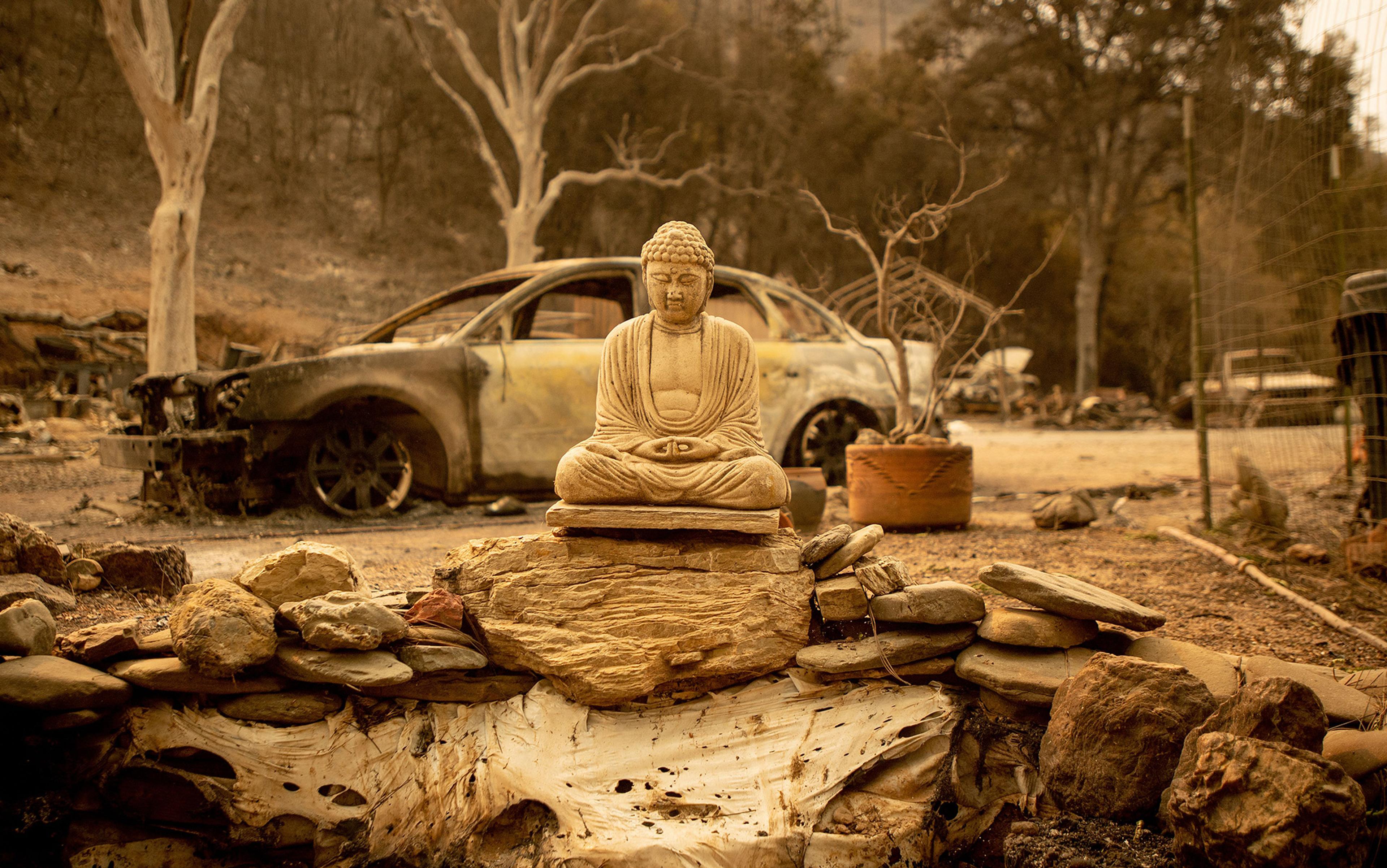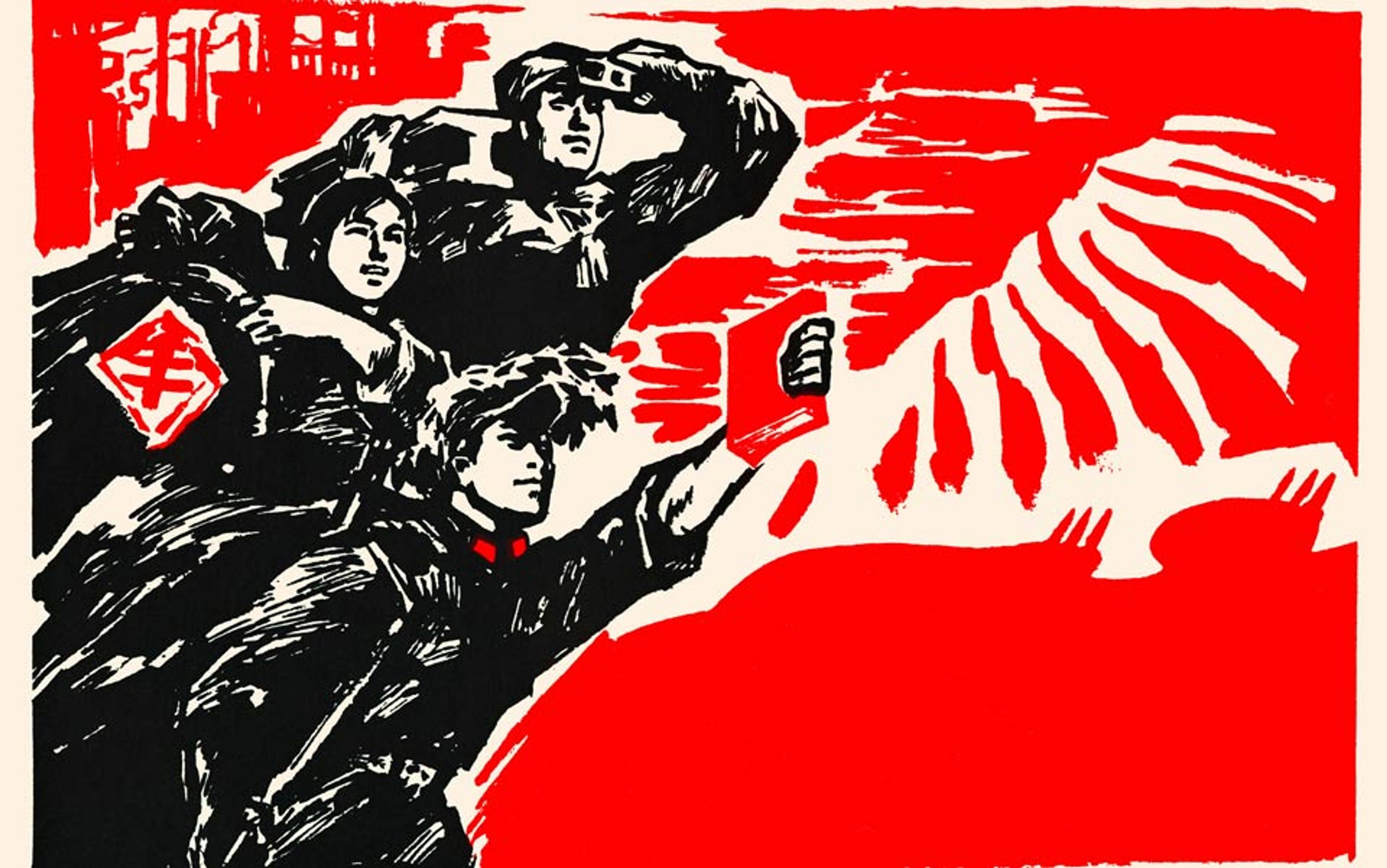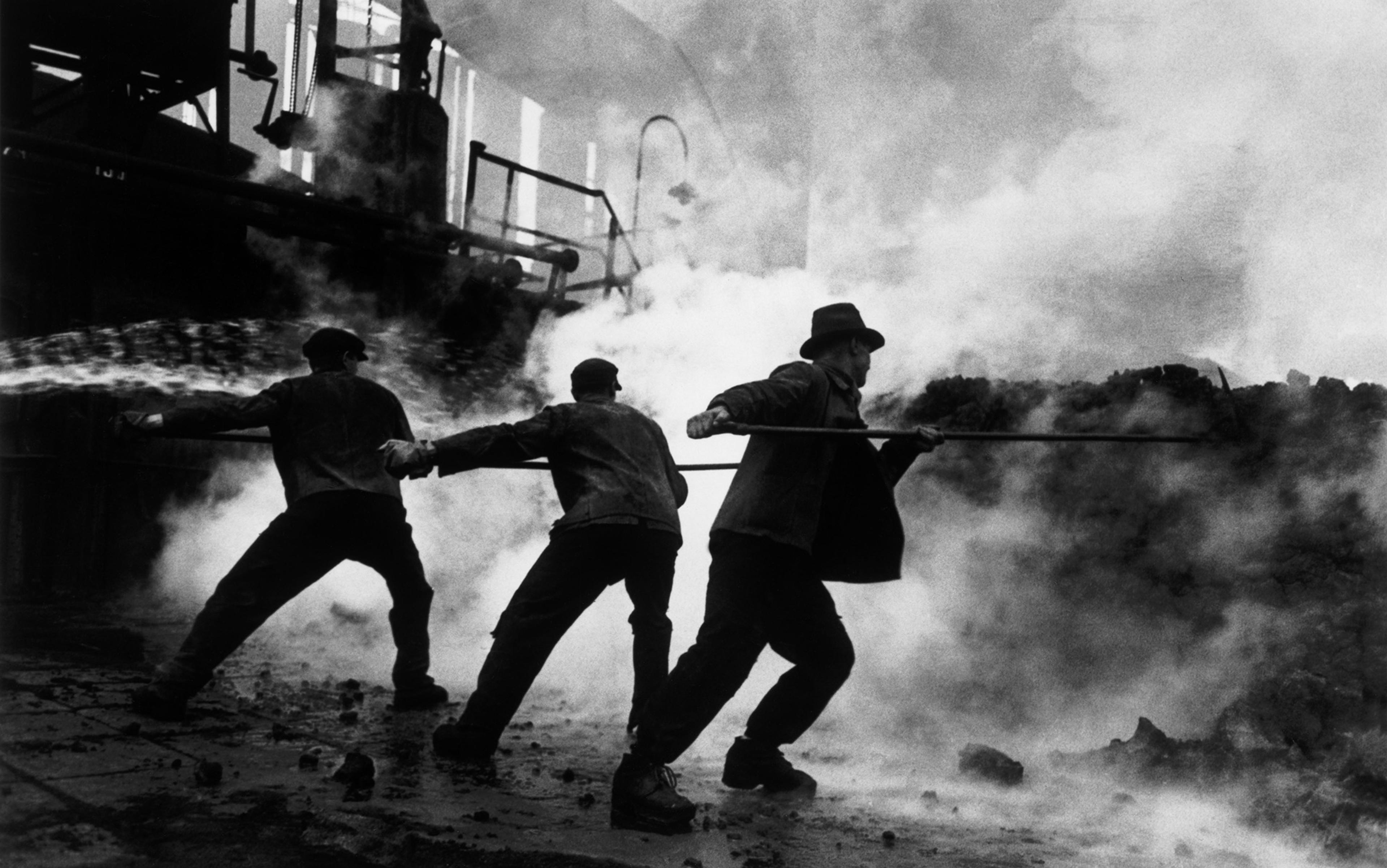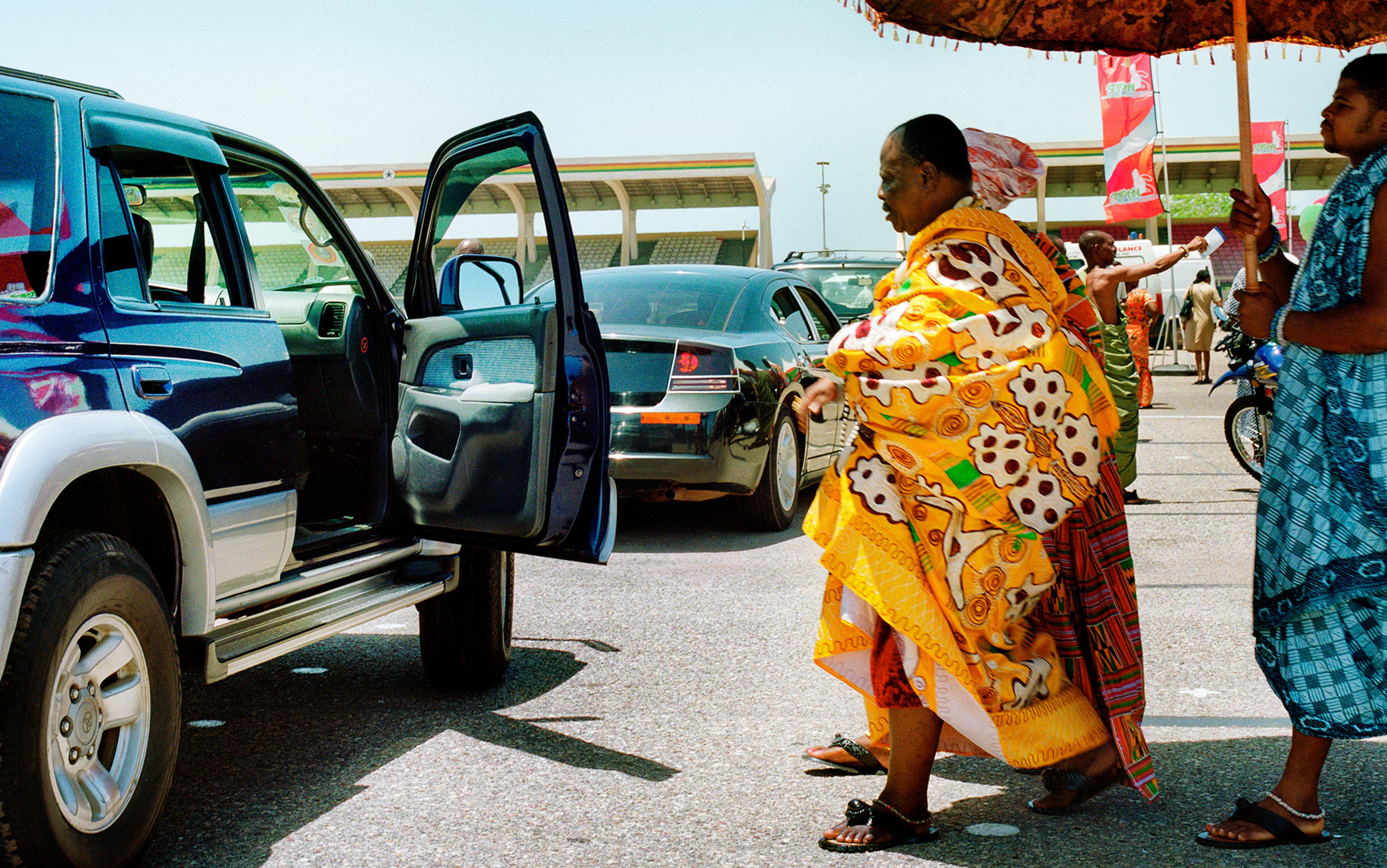Marxism and Buddhism might not seem to have much in common. The former is a materialist socioeconomic theory conceived by a 19th-century bearded guy from Trier in Germany, while the latter is a religion originating from orations delivered under a fig tree by a gaunt, peaceful, intimidating character in what is India today. Historically and geographically, they are as far apart as it gets, but the core of their philosophical analysis of the human condition is astoundingly close. It is so close, in fact, that Buddhist metaphysics can complement Marxist socioeconomic philosophy. As the anthropologist Claude Lévi-Strauss wrote in 1955: ‘Marxism and Buddhism are doing the same thing, but at different levels.’
At least since Tenzin Gyatso, His Holiness the 14th Dalai Lama of Tibet, commented on his Marxist inclination in 1993, it is evident that Buddhism and Marxism have something in common:
Of all the modern economic theories, the economic system of Marxism is founded on moral principles, while capitalism is concerned only with gain and profitability … The failure of the regime in the former Soviet Union was, for me, not the failure of Marxism but the failure of totalitarianism. For this reason, I still think of myself as half-Marxist, half-Buddhist.
And Marx himself knew something of Buddhism. In a letter to a friend, written in 1866, he described his own meditation practice:
I have become myself a sort of walking stick, running up and down the whole day, and keeping my mind in that state of nothingness which Buddhism considers the climax of human bliss.
So do Marxism and Buddhism really complement each other? How?
Central to both philosophies is a schema of ‘diagnosis and treatment’. They share a diagnosis: life is essentially suffering. For Marx, the chief catalyst of suffering is capitalism. Capitalism creates more suffering for the working class, whereas the bourgeoisie and the capitalists are comparatively well-off – but that doesn’t mean that capitalism does not create suffering on the side of the winners too, as I shall soon point out. For the Buddha, the transient and fleeting nature of life makes suffering inescapable. In modern Japanese, the gentle sadness associated with nature’s state of flux is called mono no aware. The Indo-Tibetan Buddhist term for the effects of the impermanence of nature is duḥkha, which might be translated as suffering, but sometimes pain, frustration, sorrow, misery or dissatisfaction is more applicable. Duḥkha is the first of the Four Noble Truths that the original Buddha propounded right after his experience of enlightenment under the Bodhi Tree.
It is not difficult to see what is behind the concept of duḥkha: life is full of suffering – mental and physical – and in many cases there is little we can do about it. We get older and lose our physical and mental esprit, we lose the people we love, and the possessions we dearly hold on to will one day no longer be ours. All this is inevitable since the world is a world of impermanence and transience – anitya is the Buddhist term. We are plagued by anxiety caused by the fear of becoming ill, losing our job, losing a loved one, losing money, losing fame. The reality of suffering is an incontestable, ubiquitous truth.
This gets us to the second of the Noble Truths, which is trṣṇa, often translated as thirst, but perhaps better thought of as attachment. We are attached to our job, our family, our possessions and our selves. This is not necessarily a bad thing as it strengthens human relations and self-care, but it also causes suffering when paired with the impermanence of everything that we are attached to. So the cause of our suffering is not the nature of reality itself, but our attitude towards it. We cling to the erroneous idea that good things will go on forever and bad things will either never happen or, if they do, we will soon return to the good place.
According to Marx’s Das Kapital (1867), there is more to duḥkha than the impermanent nature of reality. There is this socioeconomic system that fosters a mechanism of competition between individuals in the quest for accumulated wealth to which the people that produce it have only limited access or no access at all. Through this process, the majority of people are abused, controlled and mistreated, alienated from their human essence – not to mention the exploitation of nature and its resources. Marx saw that capitalism generates an extra amount of unnecessary duḥkha: it keeps people in poverty (relative to the value of their labour), it keeps people unemployed (to nurture competition and to tie the workers to the capitalist), it plays with the health of people (by forcing them to work under harmful circumstances, having to fear pecuniary injury when medical care is necessary) and, above all, it alienates people from the essence of their human existence (by the division of labour and long working hours). Social inequality and horrendous living conditions lead to crime, violence and hatred – this is no surprise. Crime, poverty, alienation and exploitation cause suffering, but not exclusively on the side of the exploited workers. Capitalists live in constant fear of losing their status and their money, so they have to work hard to protect it – what you own, in the end, owns you.
App-based mindfulness practice has become the newest balm for the stressed-out capitalist
For Buddhists, the source of suffering lies in a conflict between how we take reality to be and how reality really is. To get rid of suffering, then, is to apprehend reality as it really is – this is being in the mode of enlightenment. According to Marx, there is an extra source of suffering in the mode of production. So, for him, the point is to change this awful mode of production to something better. But as with enlightenment, it is hard to see the problem in the first place, and the capitalist system does everything to hide its malevolence behind the welcoming curtains of consumer culture.
From a Buddhist perspective, the capitalist motor is fuelled by humankind’s deepest vice: its trṣṇa. Marx understood that the whole economic system is based on consumption, and marketing agencies know how to push trṣṇa to the realms of utter perversion, thereby warranting a continuum of consumption and labour. The worker is the hamster, consumer culture is the hamster wheel. People are tricked into believing that Furbies, iPads and all those other pointless goods and services are necessary for a happy and fulfilled existence. A sense of ‘meaning’ has been replaced with instant, short-term, on-demand happiness.
Buddhists know about the elusiveness of happiness. Given the inevitable transience of life, the Buddhist goal is not to be happy 24/7, but to live a meaningful life. Life for the worker becomes meaningful, Marx says, in that it helps the worker to, more or less directly, reduce the suffering in someone else, since capitalism drives the worker to specialisation, and not everybody will become a nurse, doctor, social worker, teacher etc.
Capitalism evolved around the human desire for a meaningful existence, but it offers only short-term happiness. Why, then, are we still thirsty for pointless consumer goods? Because we are made to believe that the possession of those goods defines us. The psychologist Philip Cushman in 1990 accurately described the ping-pong game between conspicuous consumption and the source of suffering, which is the trṣṇa for a true self: ‘Capitalism treats humans as empty vessels, never complete, never one, without a stable identity, needing to be filled with commodities.’ Consumer culture is supposed to fill a lacuna – a sense of self, of identity, of essence – gouged into the human psyche by the alienating working conditions found under capitalism. This ping-pong game is a psychological perpetuum mobile that oscillates between taking away an experience of self-identity (by division of labour, poverty and unemployment), and substitutes it with consumption. This liminal state contributes to the continuous generation of capital.
The consumerist mentality is not the remedy. Unfortunately, Buddhism in the form of watered-down app-based mindfulness practice and yoga in Lululemon Athletica spandex has become the newest balm for the stressed-out capitalist. The most famous Marxist academic of our time, Slavoj Žižek, once said that ‘the “Western Buddhist” meditative stance is arguably the most efficient way for us to fully participate in capitalist dynamics while retaining the appearance of mental sanity’.
We are, of course, more than empty vessels. But what are we? Marx’s concept of the self is a matter of considerable debate among Marx scholars. The social psychologist Erich Fromm in 1961 wrote that ‘Marx did not believe, as do many contemporary sociologists and psychologists, that there is no such thing as the nature of man; that man at birth is like a blank sheet of paper, on which the culture writes its text.’ Yet, there must be a self, otherwise we could not be alienated from it, but is it an empty vessel that asks for refuelling?
In 1845, Marx wrote of his fellow Young Hegelian, Ludwig Feuerbach, that he ‘resolves the essence of religion into the essence of human nature. But the essence of man is no abstraction inherent in each single individual. In reality, it is the ensemble of the social relations.’ There is no central property of the self, only relations. According to Marx’s historical materialism, the social relations that determine the self are, as we know, determined by the ‘mode of production’. Consequently, when the ‘mode of production’ changes, so does human nature.
Meanwhile, according to Buddhist philosophy, there is no self as entity, but only as a loose set of relations. In the circles of later Buddhism, one technical term has been of major significance: svabhava. It is frequently translated as self-being, but for our purposes can be thought of as substance. What is a substance? This is hard to define, and philosophy has said a great deal about it. Let us just think of a substance as a uniform, self-sufficient, necessary, unchangeable, fundamental thing-in-itself. Prominent examples of a substance are God, the world-soul, mind and matter.
For the Buddhists, there is nothing with svabhava, nothing with substance. So, the self has no svabhava either. We can unfurl the idea svabhava-less-ness, or sunyata (emptiness), with a metaphor. But first, consider an immediate rejoinder: it is easy to think of the Buddhist picture described above as hopelessly nihilistic. But denying that there is a substance to the self, in a deep metaphysical sense, does not imply that there is no such thing that functions as a self. In fact, Buddhists did not want to eliminate the self once and for all, and neither did Marx. Without anything that functions as the self, there would be nothing that suffers under capitalism or from being thrown into the transient world. Hence, Marx’s complicated sociopolitical analysis would be pointless, and Buddhism somehow unmotivated. There has to be something that functions as the locus of suffering. For that, let us turn to the Buddhist notion of sunyata (emptiness).
If something is empty of substance, then it is relations that define the thing. In other words, everything is what it is in virtue of bearing certain relations to other things and, as those things are related to other things, ultimately in virtue of bearing relations to everything else. Everything stands in a unique set of relations to other things, which thereby individuates it without its having to assume a unique and individual substance. You stand in countless relations to your parents, spouse, but also to your car and bank account. The impression that there are such things as houses, selves, spouses, bank accounts, hammers and so on, all independent of a network of relations, is actually a conceptual illusion. This, in short, is the Buddhist notion of emptiness. The notion of emptiness includes the notion of self. The self, too, is empty in that it is exclusively defined by its relations, not some underlying substance. This is the idea of no-self.
There is nothing – so to speak – to stick consumer goods to, like sticky notes on a refrigerator
This relationalism is beautifully invoked in the metaphor of Indra’s net. Here is how the religion scholar Francis H Cook described it in 1977:
Far away in the heavenly abode of the great god Indra, there is a wonderful net which has been hung by some cunning artificer in such a manner that it stretches out infinitely in all directions. In accordance with the extravagant tastes of deities, the artificer has hung a single glittering jewel in each ‘eye’ of the net, and since the net itself is infinite in dimension, the jewels are infinite in number. There hang the jewels, glittering like stars in the first magnitude, a wonderful sight to behold. If we now arbitrarily select one of these jewels for inspection and look closely at it, we will discover that in its polished surface there are reflected all the other jewels in the net, infinite in number. Not only that, but each of the jewels reflected in this one jewel is also reflecting all the other jewels, so that there is an infinite reflecting process occurring.
This idea of interdependence emphasises the communitarian aspect of human life – and should serve as the metaphysical fundament of Marxist philosophy. The Marxist idea of the self is defined by its biological, psychological and economic relations to others, indeed all others inside the animate and inanimate world. Just like the net metaphor suggests, this creates a universal interdependence, or ‘interbeing’ as the Buddhist monk Thich Nhat Hanh called it in the 1960s. For Buddhists, this picture of the self and reality is available through meditation.
The idea that the self is defined in terms of others reveals the illusiveness behind the metaphor of the empty vessel. People are not empty vessels because we are not vessels at all – there is no such thing as a vessel. This really is the point of the idea of no-self: there are relations, but no vessels. Once one realises the true nature of emptiness, there is nothing – so to speak – to stick consumer goods to, like sticky notes on a refrigerator; the ping-pong game between consumption and alienation should stop with this insight. Why? Because there is, from a Buddhist metaphysical perspective, no refrigerator.
The realisation of interbeing and emptiness (two sides of one coin) generates compassion, according to the Buddhists. If it is true that I am in interbeing with the people around me, I would rather abstain from harming them. Otherwise, I would end up harming myself though the mediate effects of my actions. Capitalism obfuscates this interdependence by fostering a reckless, and mythical, individuality, but in Marxist thought interdependence is omnipresent. So, the Buddhist metaphysics of emptiness and its concept of the empty self can, and should, serve as a foundation for the Marxist picture. The goal is a ‘nirvana of society’, as the Dalai Lama says.
A society based on the Buddhist ideal of compassion is one where Marxism could finally be implemented. In fact, there have already been several attempts to politicise Buddhism. What Thich Nhat Hanh calls Engaged Buddhism is one example; Uchiyama Gudō (1874-1911), a Soto Zen priest who advocated socialist movements during the Meiji era, is another. Perhaps the most outspoken Buddhist-Marxist was Girō Seno’o (1890-1961), a Japanese Nichiren Buddhist who in the 1930s advocated Revitalised Buddhism, which combined Marxist economics with Pure Land Buddhism. Seno’o is even said to have argued that ‘the capitalist system generates suffering and, thus, violates the spirit of Buddhism’.
Let’s call the Marxist socioeconomic system that is grounded in Buddhist metaphysics Compassionate Marxism. The focus of Compassionate Marxism has to be on ahimsā – nonviolence. Only then can Marxism be immune to totalitarian and authoritarian abuse, and hence no longer prone to repeat its history. Whether Marx himself taught that revolution is necessarily violent, or if there is a possibility of a peaceful transformation, is a vexed question. During the 1844-49 period, Marx held that violent revolution is indeed necessary, given the stringent structure of the bourgeois system. But if it is the economic circumstances that necessitate a turn towards something communist, and not totalitarian, then nonviolent revolution might be possible given the right political interventions.
Humanity is not evil because the economic system is; the economic system is evil because humanity is
The feasibility of the Marxist project is grounded in the benevolent communal nature of the human being. Some might argue that the idea that once humanity realises its interconnectedness it would turn away from cruelty and towards compassion is wishful thinking – a justified objection. The 18th-century German philosopher Immanuel Kant understood cruelty and hatred to be each individual’s fault and deeply ingrained in the nature of human existence. This thought is widespread today, and studies in clinical psychology support it. But for Marx, it is the socioeconomic conditions that are to blame for cruelty, hatred and crime. The human, he would hold, is inherently benevolent and compassionate. Who has got it right?
I think we should all be realistically inclined enough to understand that it is likely Marx fell prey to the Swimmer’s Body Illusion: the swimmer has a perfect body not because she is a swimmer; she is a swimmer because she has the perfect body for swimming. Accordingly, humanity is not evil because the economic system is; the economic system is evil because humanity is. In the end, we are the atoms of economics, the agents of trade. Economics is dependent on us, not vice versa. History indicates that communal projects – such as the North American Phalanx, a secular utopian socialist commune in New Jersey in the 1840s – are susceptible to hatred, mistrust, bribery and fraud. In the 1960s and ’70s, the Milgram experiment and the Stanford prison experiment both suggested that we live under the tyranny of capitalism because we are either inherently tyrannical beings or because we simply obey. The capitalist system just suits our nature. All signs indicate that we don’t have the capacities for universal benevolent compassion, uncontaminated by a proclivity to evil, hatred and competition. We cannot all live like monks, even if this would ensure that one’s basic material needs would be looked after by the community.
But can’t we be both tyrannical and interconnected? Buddhist practice could help us overcome the evil aspects of our nature and promote the compassionate side within us. The socioeconomic system of Compassionate Marxism could be the breeding ground for compassion, and compassion the motor of a socioeconomic system with low duḥkha. Working on the inner Tyrannosaurus would benefit those suffering from Capitalism, which, according to Marx and Buddha, is everyone. The problem with Left-activists is that they see the evil as being exclusively caused by the socioeconomic system (this was Marx’s problem too), without understanding how these factors operate within us. ‘Social change requires inner change – becoming less selfish,’ says the Dalai Lama. The question is not who we are – we are malevolent creatures, as far as I can tell. The question is who we want to be.

